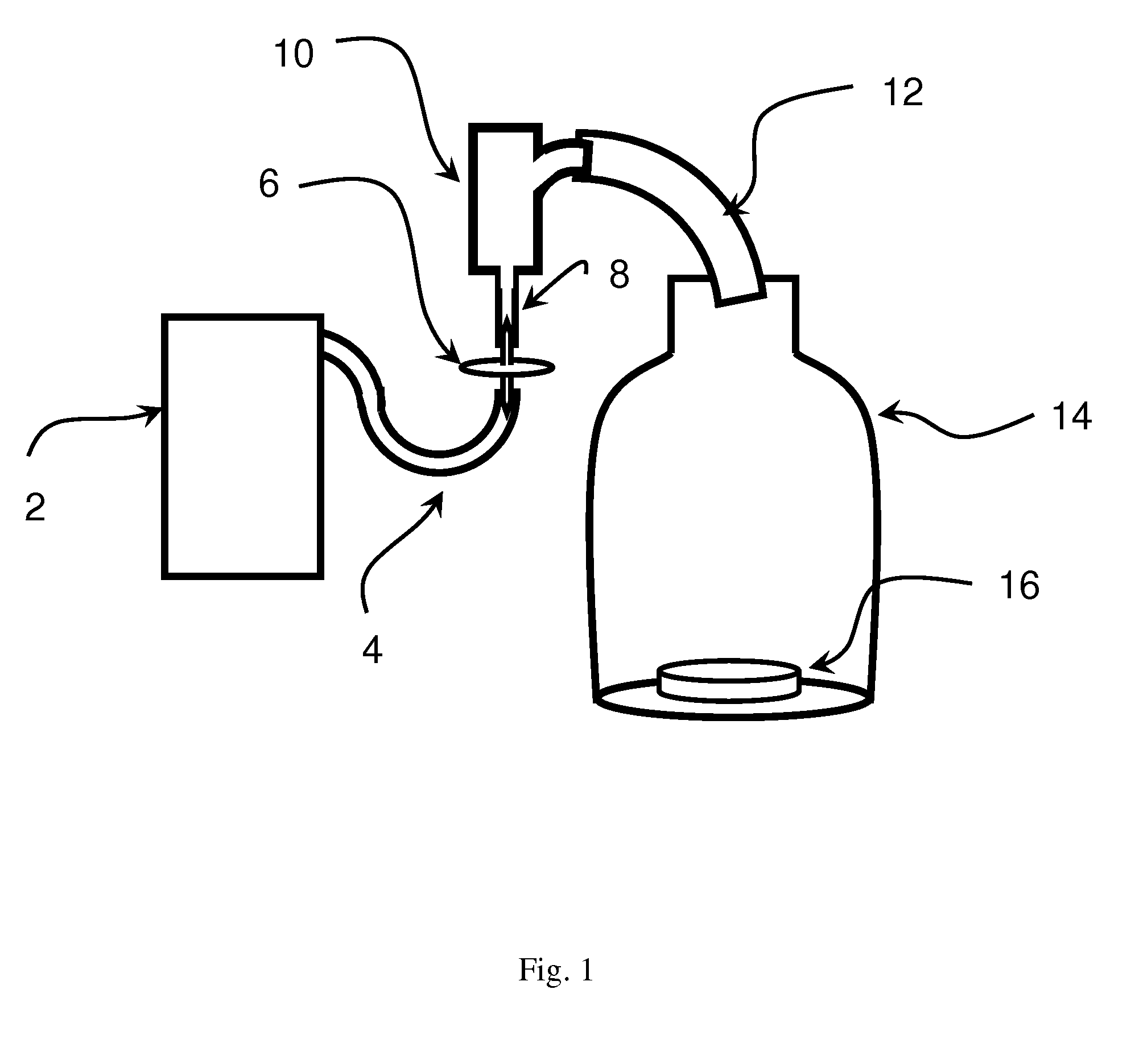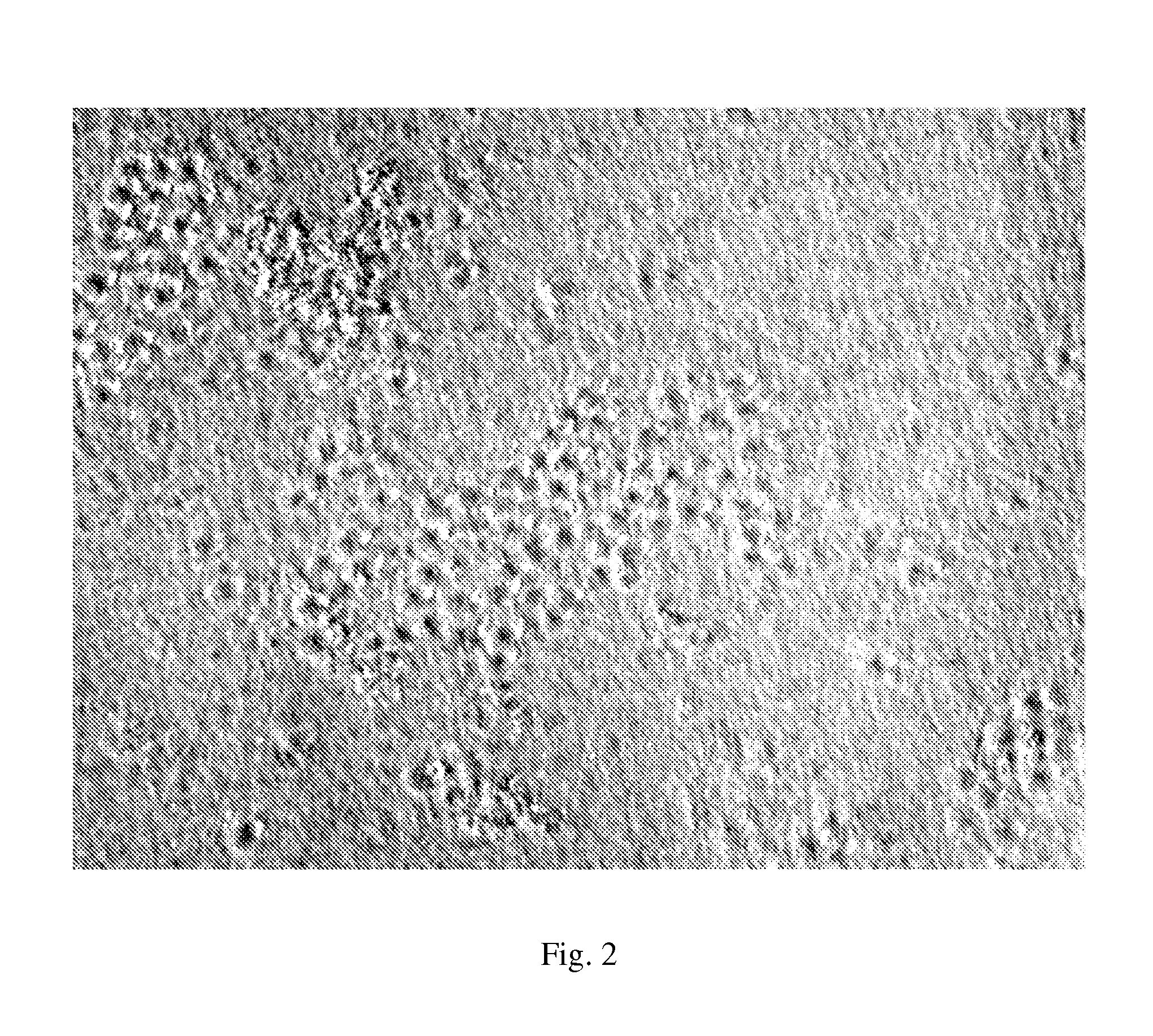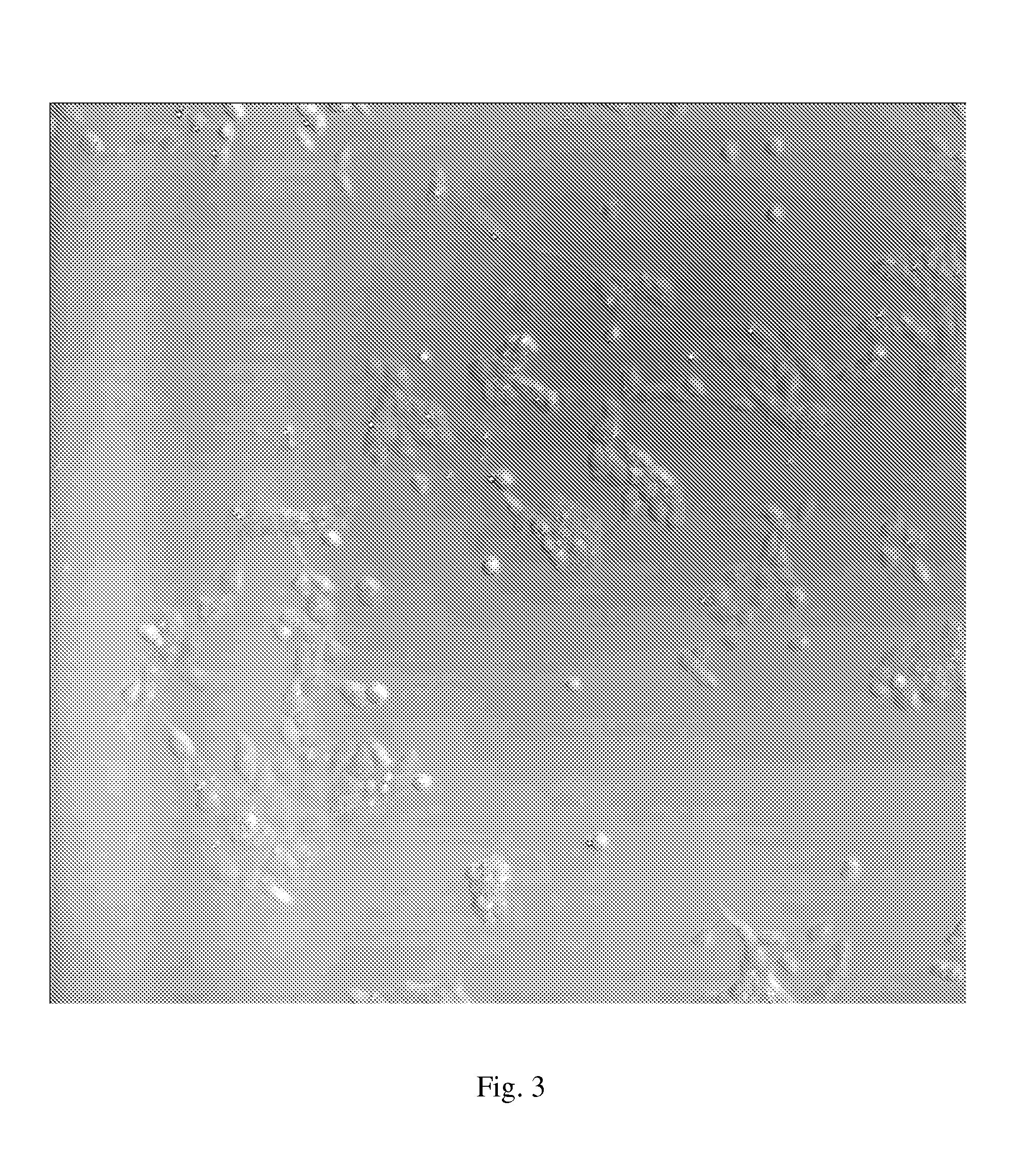Encapsulation of living cells within an aerosolized sol-gel matrix
a technology of living cells and aerosols, applied in the field of biological engineering, can solve the problems of insufficient heat dissipation, inability to encapsulate living cells,
- Summary
- Abstract
- Description
- Claims
- Application Information
AI Technical Summary
Problems solved by technology
Method used
Image
Examples
example 1
[0039]Embryonic carcinoma derived stem cells (P19 cell line) were immobilized in a thin film of unmodified silica using the above described vaporized sol-gel technique. The cells survive and are metabolically active in the materials. Uncontrolled cell growth is restricted compared to controls.
Sol-Gel Synthesis
[0040]Saturated silica sol was formed by the acid-catalyzed hydrolysis of tetramethyl orthosilicate (TMOS). TMOS and deionized H2O (DiH2O) were combined at a 1 to 12 mol ratio. A small amount of 0.04 M HCl solution (2 μl per 1 gram of TMOS / H2O solution) was added as the catalyzing agent. The solution was sonicated for 15 minutes until the completion of hydrolysis (characterized by clear homogonous sol formation). Excess methanol was then removed by rotary evaporation under vacuum (35° C. water bath, 5 min evaporation time).
Glass Slide Preparation
[0041]Organic residue was removed from the surface of 8 mm diameter glass cover slip discs using piranha solution (3 parts H2SO4, 1 pa...
example 2
[0053]Data relating to oxygen influx and proton efflux were collected using a self referencing electrode apparatus.
Oxygen Influx
[0054]Oxygen influx measurements at the coating surface demonstrated the active intake of oxygen, indicating that the coated cells were metabolically active. Oxygen influx at the cellular surface 1 hour after coating with sol-gel vapor is shown in FIG. 7. The addition of chlorocarbonyl cyanide phenyl-hydrazone (CCCP), a metabolic disrupter, generated increased influx of oxygen. This data demonstrates that the cells are metabolically active and can respond to pharmacological stimuli after encapsulation.
[0055]Proton efflux is the result of a variety of cellular properties including metabolism. Proton efflux was detected at the cellular surface 48 hours after coating cells with the sol-gel vapor, indicating that the cells were alive and active (FIG. 8, Panels A and B). The addition of a variety of metabolic disrupters influenced proton efflux with...
example 3
Sol Gel Coating of Bacterial Cells
[0056]Sol gel vapor coating has been used to immobilize bacterial cells (data not shown). For example, experiments have been conducted to coat cellular surfaces to encapsulate and immobilize Escherichia coli and Pseudomonas bacteria. The technique is not limited to these strain and can be applied to a wide variety of bacteria.
PUM
 Login to View More
Login to View More Abstract
Description
Claims
Application Information
 Login to View More
Login to View More - R&D
- Intellectual Property
- Life Sciences
- Materials
- Tech Scout
- Unparalleled Data Quality
- Higher Quality Content
- 60% Fewer Hallucinations
Browse by: Latest US Patents, China's latest patents, Technical Efficacy Thesaurus, Application Domain, Technology Topic, Popular Technical Reports.
© 2025 PatSnap. All rights reserved.Legal|Privacy policy|Modern Slavery Act Transparency Statement|Sitemap|About US| Contact US: help@patsnap.com



